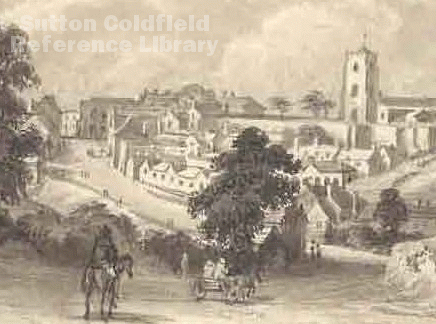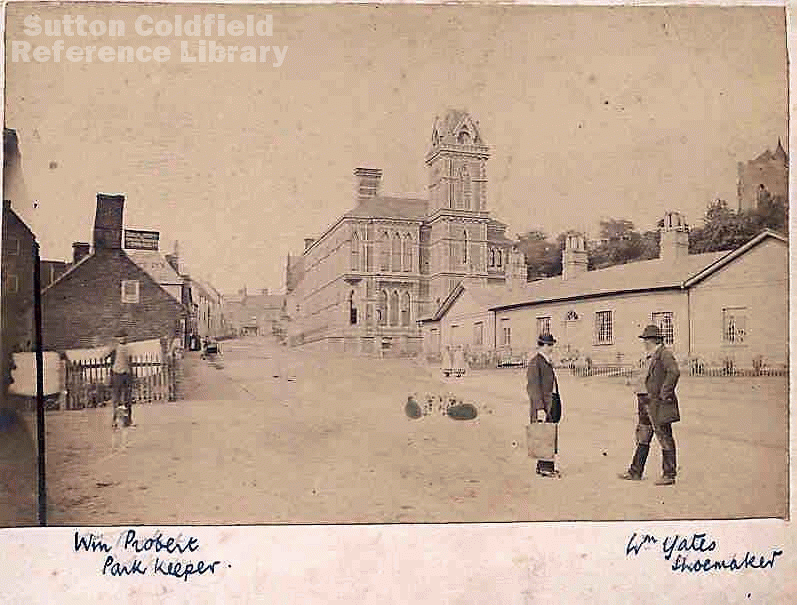Mill Street has seen a great deal of redevelopment over the years. Three hundred years ago the grammar school founded by Bishop Vesey and some almshouses used to stand near Church Hill. However, on 6th March 1737 the Warden and Society resolved “that the Almshouses belonging to this Parish (which are become very ancient and much decayed) shall be taken down and the Timber, Brick and Materials that arise therefrom shall be applied towards building a Workhouse where the old school stood”, (the school had recently fallen down) “… and the said Corporation shall pay to the Schoolmaster for the time being the yearly rent of four pounds for such part of the Old School House as is now remaining and the land where the same stood”
In 1822 the Warden and Society identified a site for the proposed new school in Sutton near the bottom of Mill Street. Although the land belonged to the Corporation, five cottages would have to be demolished to make way for the school, and the tenants of the cottages were approached to give up their tenancies. Some of them were reluctant to move out, and negotiations dragged on until 1825, when all five were found alternative accommodation, some in the new almshouses in Mill Street.
Planning for new developments which involved the demolition of existing houses already affected Mill Street. An Act of Parliament of 1807 established the Birmingham and Watford Gap Turnpike Trust and the Trustees were given power to widen and straighten the road, now the A5127. At Mill Street this entailed taking down “such part of a certain Messuage Cottage, or Tenement and Pig Stye, and to take the land on which such part of the said Buildings are erected and also to take so much of the land occupied therewith as shall be necessary, the whole of which belong to the Warden and Society, and are now in the occupation of Richard Granger”. The part of Granger’s property not required for the road (now a car park), was immediately redeveloped by the building of a row of six almshouses. Another Mill Street building, on the opposite side of the road, was also demolished for road widening, belonging to Emmanuel College, Cambridge; the College received £189.12s.0d. from the turnpike road commissioners for a blacksmith’s shop and land at the bottom of the hill.
More demolition took place in Mill Street in 1858 to make way for the new Town Hall, as recorded in Sarah Holbeche’s Diary: “August 4th 1858. Foundation of Town Hall - laid first stone by Mrs. Baron Webster on the site of the jail, gardens and infants school added to the space gained by the blasting of rock”.
The Borough Council decided in 1935 that the block of houses bounded by Mill Street, Coleshill Street and Church Hill had become a tumbledown eyesore, and the property was purchased and demolished. Vesey Gardens was laid out on the site, paid for by public subscription. Finally, all the property on the other side of Mill Street, which belonged to Emmanuel College, was sold to a developer, demolished, and replaced by the Emmanuel Court office complex.

